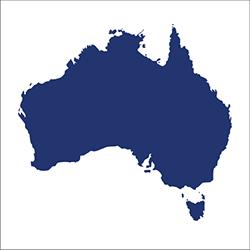
This project was funded by the Australian Government ($165,165). Australian Government funding was provided through the National Water Grid Fund.

A farm within the Murray–Darling Basin.
Project overview
Managed aquifer recharge (MAR) is the intentional recharge of water into groundwater aquifers. This is done for environmental benefit or so it can be later recovered.
This project involved a national appraisal of 17 irrigation areas. These were selected if they could benefit from MAR. Benefits include:
- increased water security
- more storage capacity in existing dams
- better management of surface groundwater resources in a coordinated way.
The selected areas provided a broad geographic spread across Australia. The areas had high demand for groundwater and high value agriculture operations. They also had the potential to switch to higher value crops. Areas with known groundwater salinity issues were not included.
Although the project was focused on MAR for agriculture, MAR could also be used in the areas to improve regional town water security.
Goals of the assessment
This preliminary study assessed MAR opportunities in agricultural areas across Australia. It aimed to find suitable areas based on an ongoing demand for groundwater. Areas also needed available water for recharge and suitable aquifer storage.
MAR for agriculture has the potential to:
- increase the availability and security of water supplies
- build the resilience of agricultural enterprises to a changing climate
- lead to socio-economic benefits distributed across regional communities.
Outcome of the assessment
Of the 17 areas, 15 sites had significant aquifer storage potential. Conservative estimates of storage capacities range from 10 to 280 gigalitres (GL).
Estimates of storage potential were made using regional scale spatial data relating to:
- soil
- geology
- topography
- groundwater parameters.
There were 6 areas found to be the most prospective potential aquifer storage locations for MAR at scale. These had potential aquifer storage of 50 GL or more. These were:
- the Lachlan, Macquarie and Namoi rivers in New South Wales
- in southeast South Australia
- Bundaberg in Queensland
- Gingin in Western Australia.
MAR was found to still provide some localised benefits in areas where potential aquifer storage was less than 50 GL. These benefits are from recharging smaller amounts, around a few GL/year. These storages may be more suited to dampening intra-annual water variability. They could provide critical irrigation support of fixed-root perennial crops (i.e. high value horticulture) throughout one or more consecutive dry seasons. These areas were at:
- Benalla, Hamilton and Loddon-Kerang in Victoria
- Carnarvon and Myalup in Western Australia
- Cressy-Longford and Winnaleah in Tasmania
- McLaren Vale in South Australia
- St George in Queensland.
The project also found areas of future research to progress MAR opportunities. These included detailed localised assessments of suitable sites and investigations to address knowledge gaps. Research could include:
- clogging issues
- assessing the potential for agricultural development or expansion
- building demonstration agricultural MAR schemes
- considering governance arrangements for MAR schemes.
Some of these are the subject of current Science Program projects.
Key project benefits
Learn more
- Visit CSIRO’s Rapid national appraisals of new groundwater-based Infrastructure opportunities project page.
- Find out about our Science Program.

